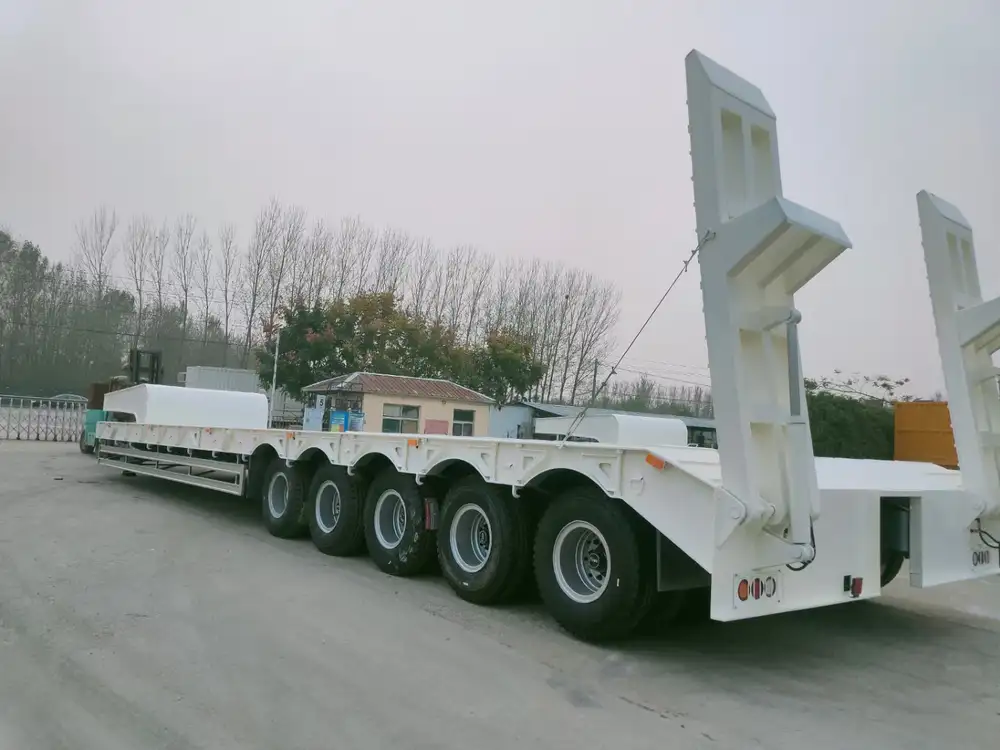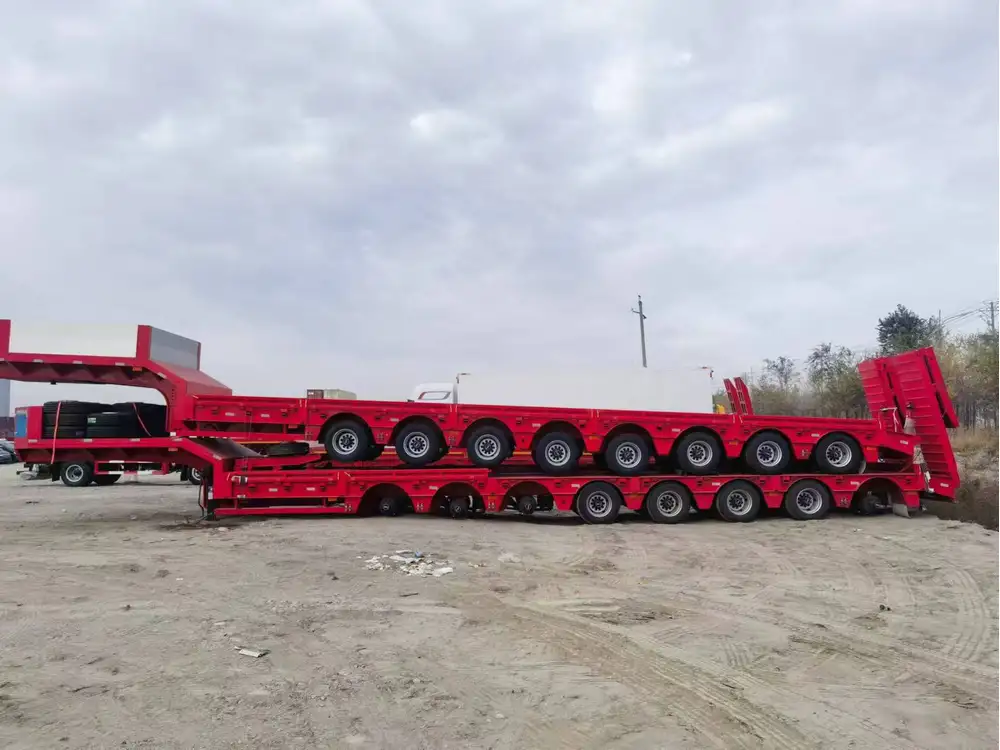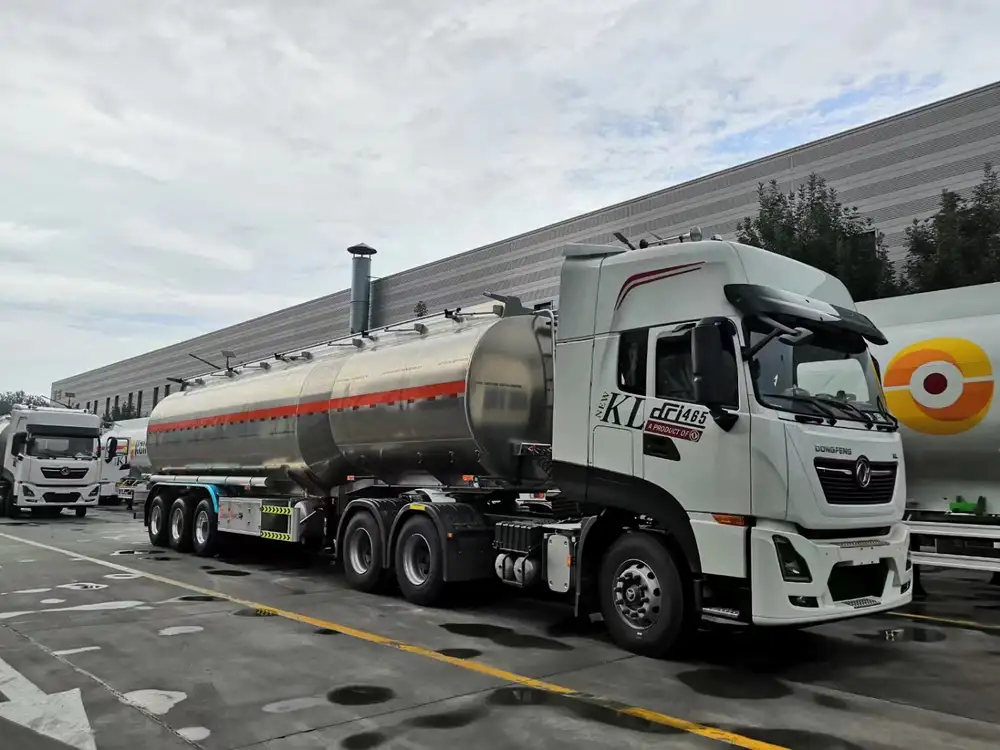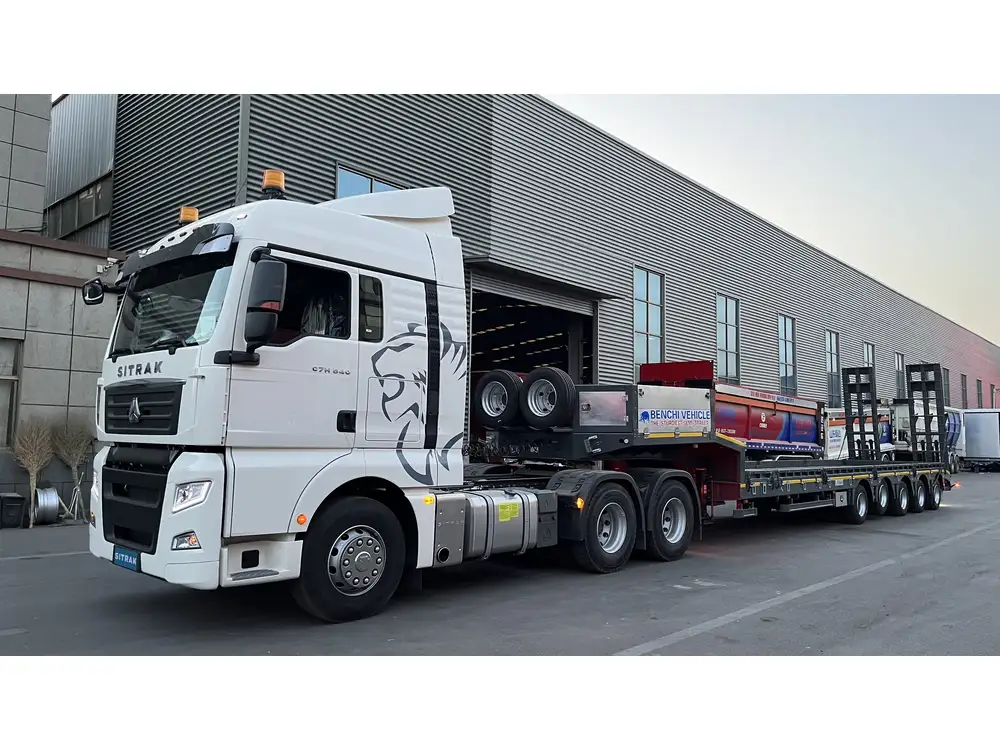In the intricate world of logistics and transportation, the specifics of flatbed trailers play a crucial role in ensuring efficiency and reliability in hauling various goods. Among these specifics, one question frequently arises: How tall is a flatbed trailer? This article delves deeply into the dimensions, factors influencing height, comparisons with other trailer types, and the practical implications of trailer height for users.
Key Dimensions of Flatbed Trailers
To accurately address the question of height, it’s important to consider that flatbed trailers come in various sizes and specifications, primarily defined by three key dimensions: length, width, and height.
Standard Height of Flatbed Trailers
- Typical Height Range: The average height of a standard flatbed trailer generally measures between 4 to 5 feet, or approximately 48 to 60 inches from the ground to the top of the deck.
- Variability Factors: This height can change based on several factors, including the design of the trailer, suspension type, and load specifications.

Height Comparisons with Other Trailers
| Type of Trailer | Average Height | Typical Use Cases |
|---|---|---|
| Flatbed Trailer | 4 – 5 feet (48 – 60 inches) | Hauling construction materials, machinery, and bulky items |
| Enclosed Trailer | 6 – 8 feet (72 – 96 inches) | Transporting sensitive or fragile goods |
| Lowboy Trailer | 2.5 – 3.5 feet (30 – 42 inches) | Long and heavy items like heavy machinery |
| Gooseneck Trailer | 5 – 7 feet (60 – 84 inches) | Extra height for large loads, often used in agriculture |
This comparative analysis outlines not only the unique dimensions of flatbed trailers but also provides insight into their applications relative to other trailer types.
Factors Influencing Flatbed Trailer Height
Understanding the height of flatbed trailers involves examining multiple dimensions and aspects that can lead to variability in height:
1. Trailer Design and Structure
The manufacturing design of the trailer contributes significantly to its height. Some flatbed trailers utilize specialized materials that may slightly increase overall height, while others are designed for rugged terrains, impacting the suspension systems used.

2. Load Types and Weight Distribution
The type of cargo being transported often dictates modifications in the trailer height. For example:
- Heavy Loads: Trailers may incorporate a longer neck or add additional support structures, elevating the load height.
- Lighter or Bulk Loads: A lower deck height might be preferred for stability.
3. Road Conditions and Regulations
Various regions and states have different regulations regarding maximum load height. In the U.S., the maximum height limit is generally 13.5 feet when on public roads. However, the flatbed itself must comply with these restrictions based on its own height without the load.
4. Suspension System Choices
The type of suspension system directly affects ride height and stability during transport.
- Air-Ride Suspension: Typically provides more adjustments and reduces height when unloaded.
- Spring Suspension: Usually keeps a consistent height regardless of load.

Practical Implications of Trailer Height
The height of flatbed trailers carries numerous implications in logistics.
Loading and Unloading
The height directly affects how easily a load can be placed onto the trailer. Considerations include:
- Forklift and Loading Dock Compatibility: Ensuring the height aligns with loading dock standards is essential to avoid incidents.
- Ramps: If ramps are used for loading heavy machinery onto a flatbed, the degree of incline can be impacted by the trailer height.
Transportation Regulations
Different states have specific height regulations, significantly affecting transportation routes and methods:
- Permit Requirements: Taller loads may necessitate special travel permits and route planning to avoid low bridges.
- Safety Protocols: When exceeding standard height limits, additional safety measures, including escort vehicles, may be required.

Insurance Considerations
Higher trailers can face different insurance rates and liability considerations due to the nature of the goods carried and the routes taken.
Usage Scenarios and Considerations
When contemplating utilizing a flatbed trailer, it is essential to factor in specific scenarios related to height:
Loading Equipment Types
- Heavy Machinery: Requires ramps and sometimes specialized support to manage weight distribution.
- Building Materials: Often involves stacking methods, which may dictate how much height allowance is necessary.
Example of loading scenarios:
| Load | Required Height Adjustment | Potential Issues |
|---|---|---|
| Machinery | Needs loading dock clearance | Risk of tipping if improperly secured |
| Lumber | Standard height is typically satisfactory | Sliding may occur with inadequate tie-downs |
| Vehicles | Careful consideration needed for offloading | Height of unloading area is critical |

Route Planning
When planning routes, height considerations must be evaluated against potential obstacles, such as:
- Bridges: Knowing the maximum height under specific bridges along the route can prevent complications.
- Roadway Restrictions: Some local jurisdictions may impose restrictions on trailer heights for specific roads.
Conclusion: The Importance of Flatbed Trailer Height
In summary, while determining how tall a flatbed trailer is may seem straightforward, the complexity of this question interlinks with multiple facets of transportation logistics. The typical heights ranging from 4 to 5 feet serve as a foundational element, yet understanding the influence of design, load type, suspension systems, along with regulatory aspects, becomes imperative for effective usage.
We’ve examined not only the standard dimensions but also the practical implications of height in loading, unloading, and navigating through transportation networks. In the world of logistics, where every inch counts, being equipped with the right knowledge about flatbed trailer height can make a significant difference in operations, leading to enhanced efficiency and safer transport practices.
By considering the intricate details outlined above, stakeholders in the freight and logistics industry can make informed choices that align with best practices, ensuring that flatbed trailers continue to serve as vital components in the transportation of goods across various sectors.



